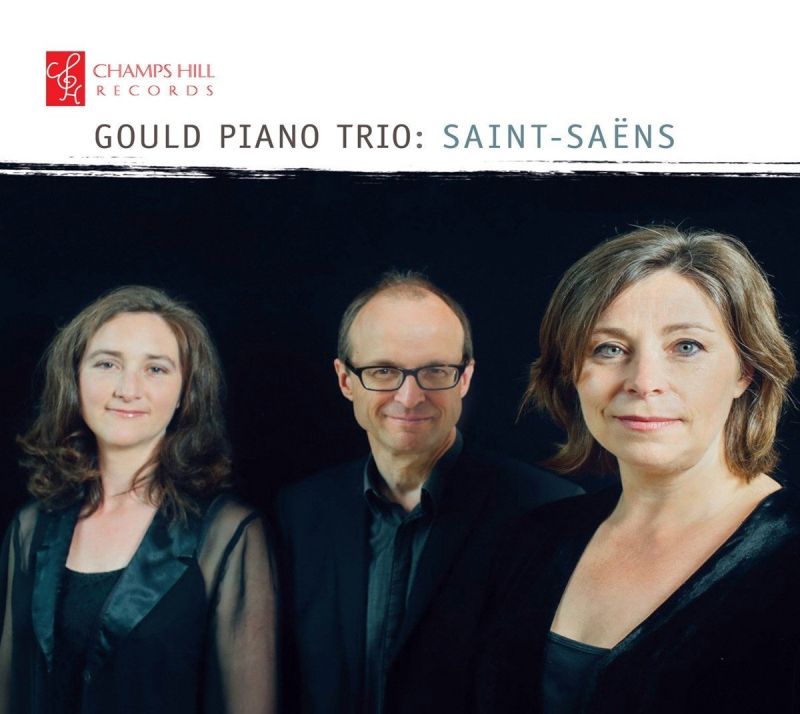SAINT-SAËNS Piano Trios (Gould Piano Trio)
View record and artist detailsRecord and Artist Details
Composer or Director: Camille Saint-Saëns
Genre:
Chamber
Label: Champs Hill
Magazine Review Date: 07/2018
Media Format: CD or Download
Media Runtime: 80
Mastering:
DDD
Catalogue Number: CHRCD140

Tracks:
| Composition | Artist Credit |
|---|---|
| Piano Trio No. 1 |
Camille Saint-Saëns, Composer
Camille Saint-Saëns, Composer Gould Piano Trio |
| Piano Trio No. 2 |
Camille Saint-Saëns, Composer
Camille Saint-Saëns, Composer Gould Piano Trio |
| (La) muse et le poète |
Camille Saint-Saëns, Composer
Camille Saint-Saëns, Composer Gould Piano Trio |
Author: Tim Ashley
Listening to it, you’re left wondering if the second version was already on Saint-Saëns’s mind when he began the first, as the piano part, with its tremolandos and grand but brief interjections, sounds more like a transcription of an orchestral original, rather than the other way round. The Goulds, as one might expect, do fine things with it. This really is a conversation piece, with cellist Alice Neary responding to Lucy Gould’s lofty violin phrases with lyrical warmth and the occasional moment of truculence, while pianist Benjamin Frith gently but firmly mediates between the two. That it feels at times discursive is Saint-Saëns’s responsibility, not theirs.
The two piano trios, much underrated, could also perhaps be described as conversation pieces, albeit between three even-handed participants. In his booklet note, Terry Blain writes perceptively on how Saint-Saëns’s determination to keep private emotions out of his output is often undermined by the depth of feeling the best of it contains, and the Goulds’ interpretations carefully probe the resulting ambiguities without losing sight of formal logic or musical argument for a second.
You can’t help but notice the way the First Trio’s bleak Andante casts a shadow over the Classical poise of the movements that surround it, or how the imposing, five-movement structure of the Second is at times threatened by rhythmic instability and harmonic or melodic uncertainty before its tensions are replaced – rather than resolved – by stark abstraction in the fugal finale. Drama and refinement combine in the playing, too, and nothing seems forced or overstated, with tone and mood immaculately judged. The recording itself is beautifully balanced: listening on headphones, I really felt as if I were sitting in a room with the Goulds themselves at a private performance for an audience of one. Very fine.
Discover the world's largest classical music catalogue with Presto Music.

Gramophone Digital Club
- Digital Edition
- Digital Archive
- Reviews Database
- Full website access
From £8.75 / month
Subscribe
Gramophone Full Club
- Print Edition
- Digital Edition
- Digital Archive
- Reviews Database
- Full website access
From £11.00 / month
Subscribe
If you are a library, university or other organisation that would be interested in an institutional subscription to Gramophone please click here for further information.




